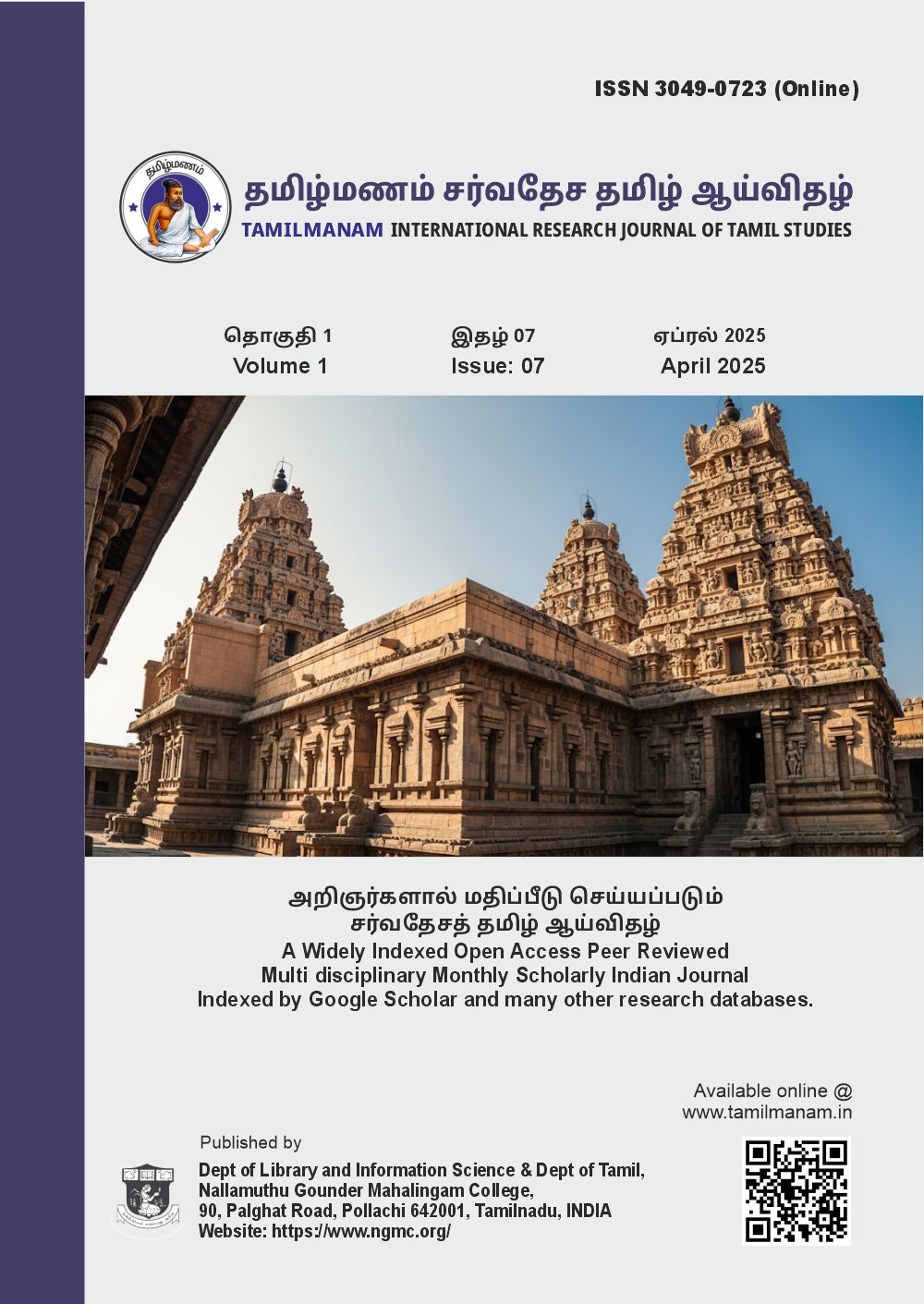Cranial Neurology Facts About Smiles in the Kural Approaching Valluvar's Statements Scientifically
குறளில் புன்னகை பற்றிய மூளை நரம்பியல் உண்மைகள்
DOI:
https://doi.org/10.63300/k128dy93Keywords:
Cranial Neurology, Smiles, ThirukkuralAbstract
As a cranial neurology expert, I am fascinated by the concepts about smiles stated in the Tirukkural. In ancient times, without medical knowledge or an understanding of cranial neurology, how could Valluvar have stated such subtle concepts? This question inspires me to conduct deeper investigations in scientific Tamil.
Downloads
References
1.Lee M, Lori A, Langford NA, Rilling JK. The neural basis of smile authenticity judgments and the potential modulatory role of the oxytocin receptor gene (OXTR). Behav Brain Res. 2023 Feb 2;437:114144. doi: 10.1016/j.bbr.2022.114144.
Downloads
Published
Issue
Section
License
Copyright (c) 2025 Prof Dr.M.A.Aleem (Author)

This work is licensed under a Creative Commons Attribution 4.0 International License.
Our journal adopts CC BY License Creative Commons Attribution 4.0 International License http://Creativecommons.org//license/by/4.0/ . It allows using, reusing, distributing and reproducing of the original work with proper citation.






